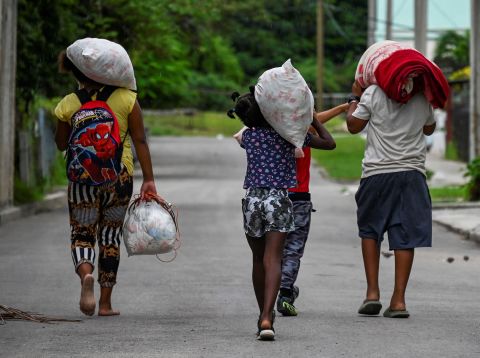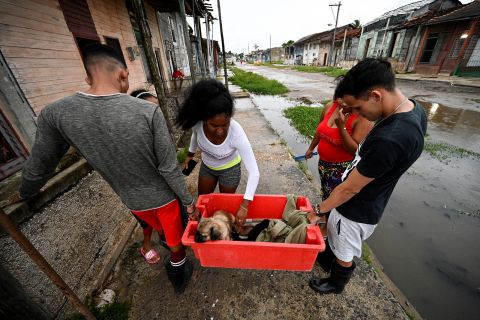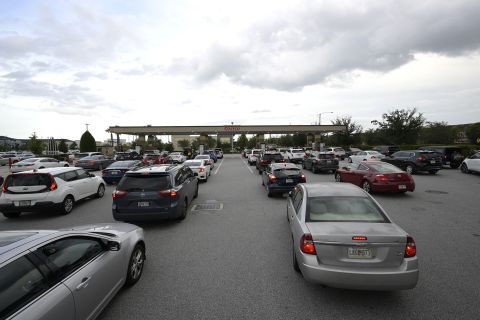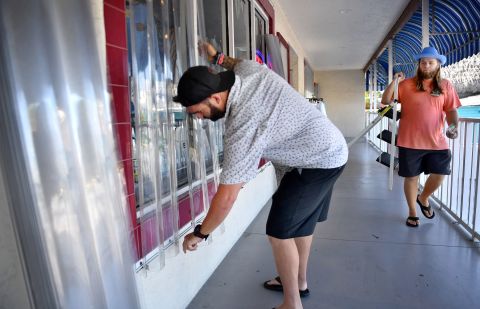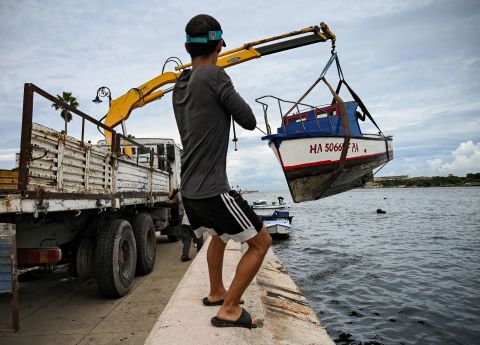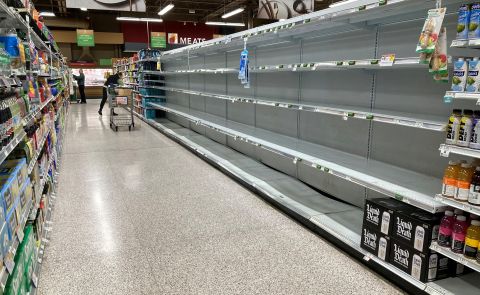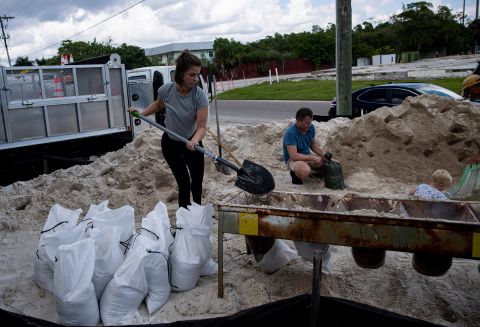CNN
—
As Hurricane Ian continues to pummel Florida, trapping residents in their homes and leaving millions without power in what’s already being called a “life-changing event,” authorities are fielding rescue calls from across the state and 911 call centers are being inundated.
Ian slammed into southwestern Florida near Cayo Costa Wednesday afternoon as one of the strongest storms to make landfall on the state’s west coast, sending rising ocean water onshore and lashing the state with catastrophic 150 mph winds as it moved deeper inland.
The monster storm flooded roads and homes, uprooted trees, sent cars floating in the streets and left more than 2 million customers without power as of early Thursday, according to PowerOutage.us.
By early Thursday morning, authorities were reporting heavy rain and flooding in the Orlando metro area, where 8 to 12 inches of rain had already fallen and up to 4 more inches of rain was expected.
The storm has since weakened to a Category 1 hurricane and is crawling across central Florida as it heads toward the east coast, dumping heavy rains on low-lying areas.
Here are the latest developments:
- Sustained winds of 75 mph: The center of the storm is about 55 miles south-southeast of Orlando, packing powerful winds while it makes its way across the state. Hurricane Ian is tied with 2004’s Hurricane Charley as the strongest storm to make landfall on the west coast of the Florida Peninsula, both with 150 mph winds at landfall.
- Record-high storm surges: The storm surge from Hurricane Ian hit up to 12 feet in some places, while multiple areas, including Punta Gorda, Port Charlotte, Fort Myers and Naples, were facing record-high storm surge of 12 to 16 feet. By Wednesday night, the storm surge along the west coast of Florida was believed to have peaked and was beginning to recede, while officials in Tampa warned residents to stay on guard.
- More than a foot of rainfall: Up to 20 inches of rain was expected in some areas, including Lehigh Acres, which received 14.42 inches of rain and Warm Mineral Springs which got 11.05 inches.
- Hurricane warnings and tornado watches continue: The storm is moving northeast at 9 mph, prompting hurricane warnings for a stretch of Florida’s west coast north of Bonita Beach to the Anclote River, and on the east coast from Sebastian Inlet to the Flagler-Volusia County line.
- Other states brace for Ian’s destruction: The storm is expected to exit Florida and move into the Atlantic Ocean on Thursday, where governors in Georgia, Virginia, North Carolina and South Carolina have already declared a state of emergency
With Hurricane Ian continuing to cut a path of destruction through Florida, the state is planning a “three-pronged” search and rescue response, with crews ready to fan out and help residents from the air, ground and sea once it is safe to do, officials said.
Calls for help were coming into several counties Wednesday.
In Fort Myers – where about 96% of the city was without power – Fire Chief Tracy McMillion told residents to stay inside, and to stay hopeful. “We’re coming for you, be encouraged,” he told residents.
The city’s downtown streets were flooded with almost four feet of water Wednesday, Mayor Kevin Anderson told CNN.
Crews surveying damage in the city early Thursday reported debris in the roadways, flooding, electrical lines down, power poles in the roads, traffic lights out, disabled vehicles and collapsed buildings.
Fort Myers resident Thomas Podgorny told CNN he was trapped in his two-story home with three others, watching vehicles float away outside and worrying for his neighbors who did not evacuate.
“I’ve lost my house. I have water and gas flowing through my bottom floor,” Podgorny said. “My neighbors have very little breathing room in their one-story house.”
A couple in Fort Myers said they were trapped in their home when the ceiling caved in, sending water inside.
“Something is dripping on me,” Belinda Collins recalled her partner saying. “He got up, and the ceiling – the family room ceiling – caved in.’”
The couple said they called 911 and were waiting for a call back about when it would be safe to leave.
In Port Charlotte, the roof above an ICU at a hospital was torn off by the storm while there were about 160 patients inside, Dr. Birgit Bodine, an internal medicine specialist at the facility, told CNN.
The staff moved patients to a safe place, but they couldn’t evacuate yet because of the conditions outside, the doctor said Wednesday night, adding, “It’s actually pretty terrible.”
People in nearby Collier County were also without power and trapped in their homes, calling for help.
“Some are reporting life threatening medical emergencies in deep water. We will get to them first. Some are reporting water coming into their house but not life threatening. They will have to wait. Possibly until the water recedes,” a Collier County Sheriff’s Office statement said.
Complicating matters further, neighboring Lee County’s 911 system was down and calls were being rerouted to Collier County, Chief Stephanie Spell told CNN. “At this point the majority of our 911 calls are water rescues,” Spell added.
Elsewhere, conditions were too severe for first responders to be out.
Emergency crews in Charlotte County were not able to respond to 911 calls Wednesday due to dangerous storm conditions, county Emergency Management Director Patrick Fuller told CNN.
And in Sarasota, authorities decided Wednesday to withdraw all police officers from the street due to wind speeds and hazardous conditions, Mayor Eric Arroyo told CNN.
While other areas began rescue efforts Wednesday evening, authorities in Tampa and Orange County warned residents that the worst of Hurricane Ian had “yet to come” Wednesday night.
Curfews were in effect for residents in Collier, Lee and Charlotte counties while severe conditions continued.
Even before the hurricane made landfall, officials knew the damage would be severe and there will be a long road to recovery.
“Ian is going to be a life-changing event. This is a very powerful, catastrophic storm that is going to do significant damage,” President and CEO of Florida Power & Light Eric Silagy, said.
There will be sections of infrastructure that crews won’t be able to repair and will have to be rebuilt, which can take weeks, Silagy said.
Jennifer Dexter, a spokesperson for the town of Fort Myers Beach, told CNN backup water pumps are down.
“When the backup water pump system goes down, that shows you how serious it is,” Dexter said.
Lee County Utilities issued a system-wide boil water notice for all customers effective immediately due to the impacts of the hurricane, according to county officials. Residents in parts of Pasco County were also asked to boil their tap water as the water distribution system in the area lost pressure and a water main ruptured.
In Manatee County, residents were asked to limit flushing, showering, doing dishes and laundry due to power outages impacting the system.
In Cape Coral, authorities were getting reports of significant structural damage across the city, Ryan Lamb, the city’s fire chief and emergency management director, told CNN.
DeSantis has requested President Joe Biden approve a major disaster declaration for all 67 counties in the state, his office said in a news release. DeSantis is also requesting Biden grant FEMA the authority to provide 100% federal cost share for debris removal and emergency protective measures for the first 60 days from Ian’s landfall.
After walloping Cuba and making landfall in Florida, Hurricane Ian is expected to slowly move across the central portion of the state before exiting into the Atlantic Ocean Thursday afternoon, where it could strengthen again and affect another part of the US.
The governors of Georgia, Virginia, North Carolina and South Carolina have all declared states of emergency in preparation for the storm’s potential impact.
There is a danger of “life-threatening” storm surge on Thursday and Friday along the coasts of northeast Florida, Georgia and South Carolina, according to the National Hurricane Center. Hurricane conditions are also possible in those areas.
The storm is expected to drop up to 20 inches of rain across central and northeast Florida, with some isolated areas receiving 30 inches, the hurricane center said.
Near the hurricane’s core, powerful wind gusts will continue to spread across central Florida and along the east-central coast overnight.
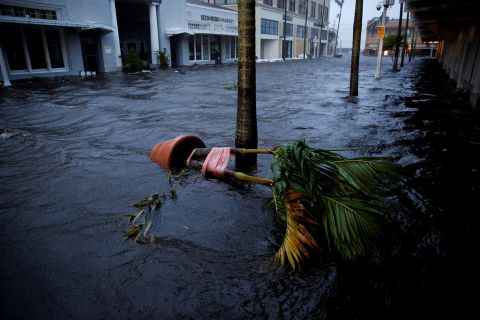
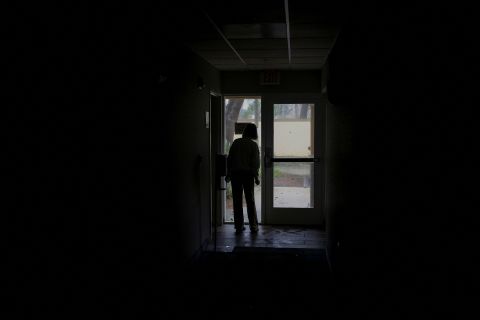
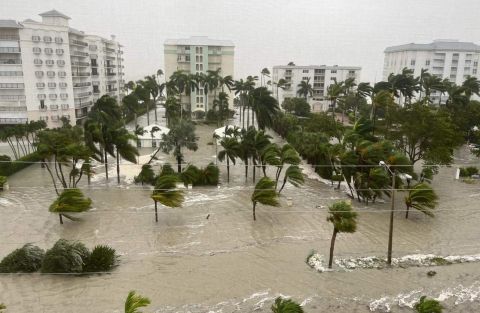 shelter in place until further notice.” class=”gallery-image__dam-img” height=”1042″/>
shelter in place until further notice.” class=”gallery-image__dam-img” height=”1042″/>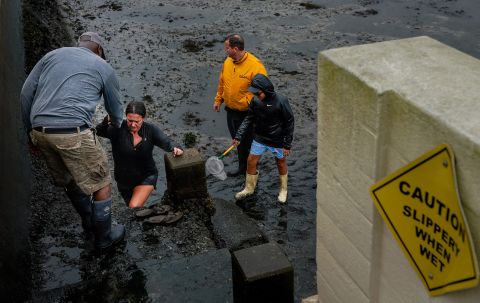 water was receding due to a negative storm surge.” class=”gallery-image__dam-img” height=”1264″/>
water was receding due to a negative storm surge.” class=”gallery-image__dam-img” height=”1264″/>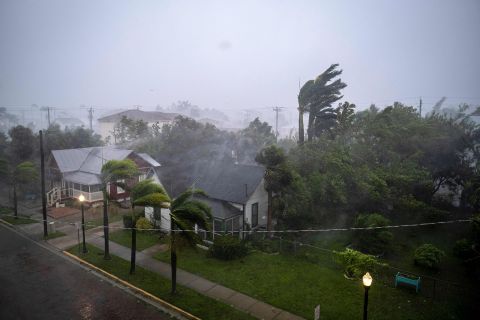
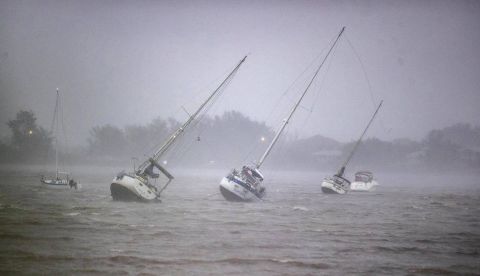
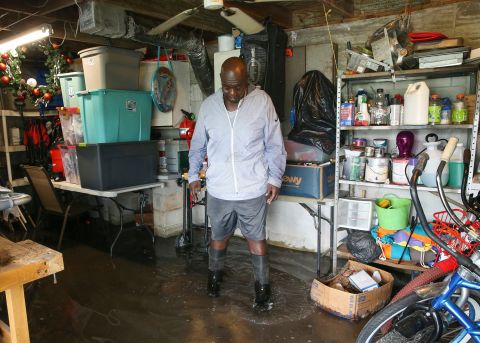
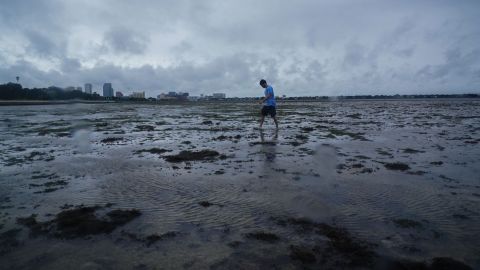 water was receding from Tampa Bay on Wednesday.” class=”gallery-image__dam-img” height=”1125″/>
water was receding from Tampa Bay on Wednesday.” class=”gallery-image__dam-img” height=”1125″/>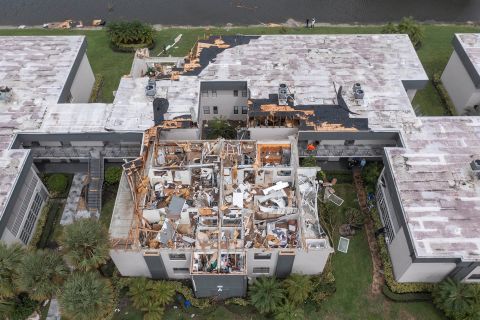 Officials believe it was caused by a tornado fueled by Hurricane Ian.” class=”gallery-image__dam-img” height=”1332″/>
Officials believe it was caused by a tornado fueled by Hurricane Ian.” class=”gallery-image__dam-img” height=”1332″/>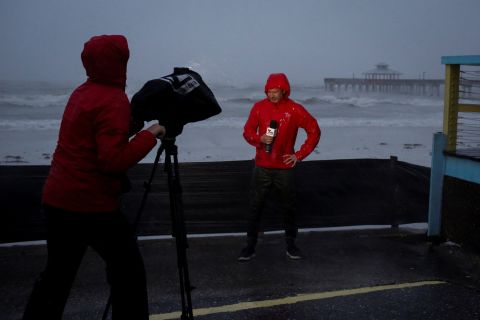
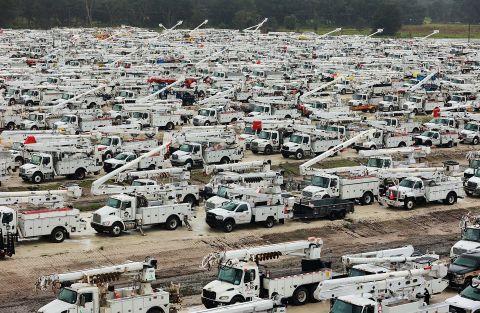

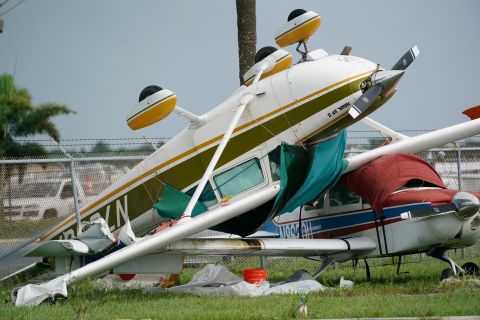
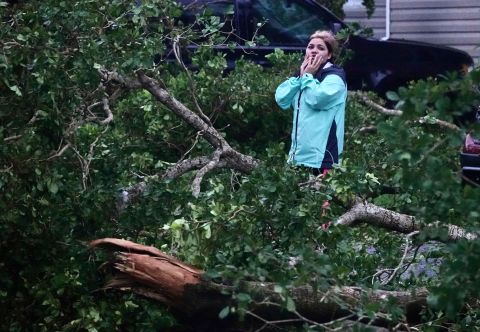
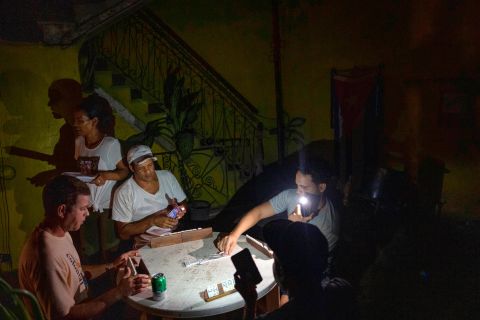 causing an islandwide blackout.” class=”gallery-image__dam-img” height=”1953″/>
causing an islandwide blackout.” class=”gallery-image__dam-img” height=”1953″/>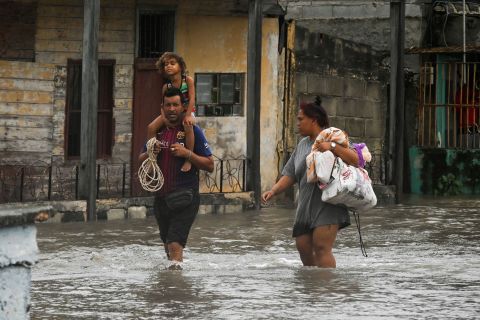


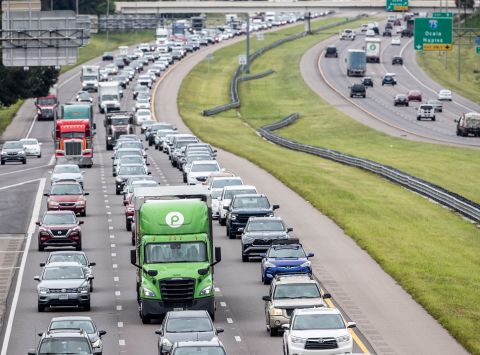
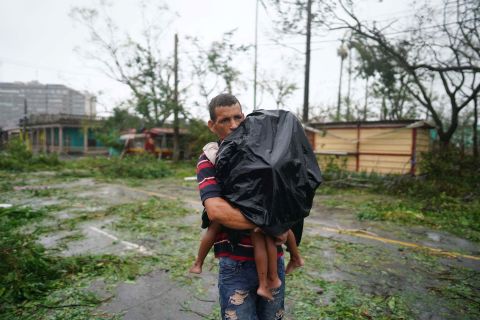
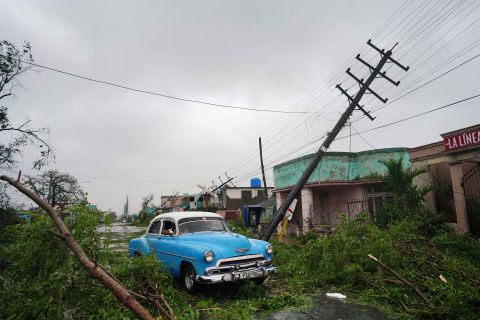
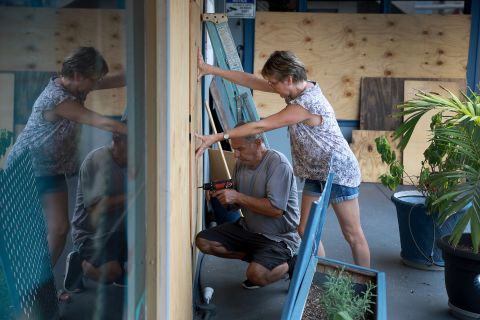

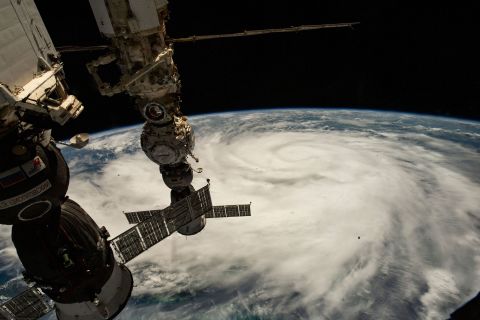
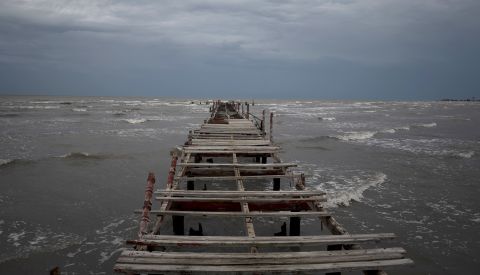 Hurricane Ian reaches Cuba on Monday.” class=”gallery-image__dam-img” height=”1145″/>
Hurricane Ian reaches Cuba on Monday.” class=”gallery-image__dam-img” height=”1145″/>